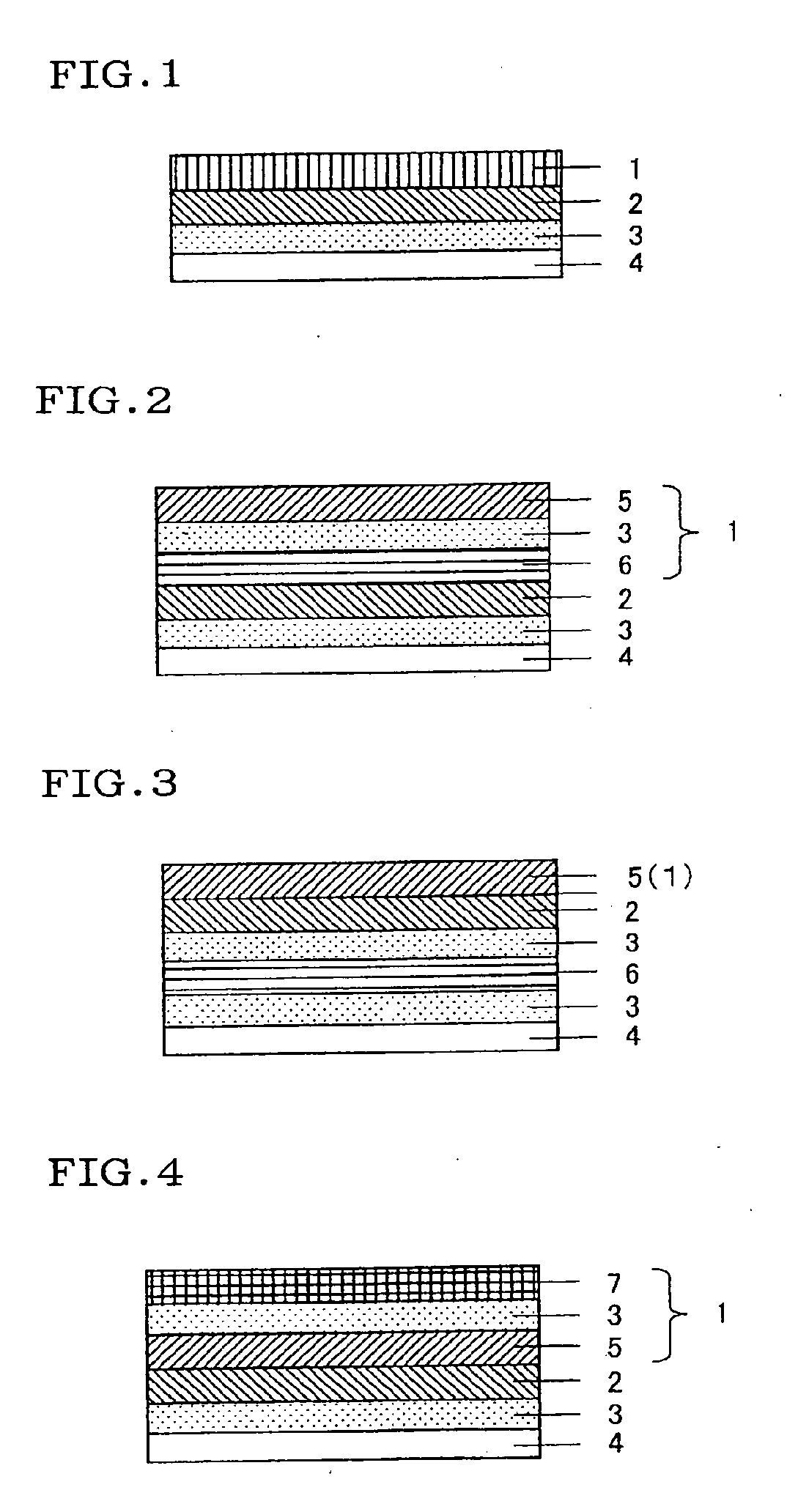Antistatic optical film, method for manufacturing the same and image viewing display
an optical film and anti-static technology, applied in the field of anti-static optical film, can solve the problems of affecting the optical characteristics, affecting the quality of the polarizing plate etc., and the quality of the polarizing plate etc., and achieve the effect of preventing the change in the quality of the polycarbonate or the norbornene resin, and excellent adhesion
- Summary
- Abstract
- Description
- Claims
- Application Information
AI Technical Summary
Benefits of technology
Problems solved by technology
Method used
Image
Examples
example 1
[0102]An aqueous solution including a polyaniline sulfonic acid (weight average molecular weight expressed in terms of polystyrene 150000 by Mitsubishi Rayon Co., Ltd., PAS) 1.0% by weight was applied on one side of a retardation plate (80 μm) made of a uniaxially stretched norbornene based resin (manufactured by JSR, Arton) having corona treatment given to a surface thereof. Obtained retardation plate was dried for 2 minutes with 80° C. warm air dryer, and an antistatic layer (0.5 μm in thickness) was formed. And a pressure sensitive adhesive layer of a pressure sensitive adhesive sheet having a pressure sensitive adhesive layer (25 μm in thickness, acrylic based pressure sensitive adhesive) currently formed on a releasing sheet A (a PET sheet with silicone releasing treatment given to one side thereof) was attached on the antistatic layer.
[0103]On the other hand after a polyvinyl alcohol film with a thickness of 80 μm was stretched by 5 times in an iodine aqueous solution at 40° C...
example 2
[0104]A polythiophene based conductive polymer (manufactured by Nagase Chemtech Co., Ltd., trade name, Denatron P502RG) was diluted with a mixed solvent of water / isopropyl alcohol (50 / 50: by weight) to prepare a coating liquid with a controlled concentration of 1.0% by weight. The coating liquid concerned was applied to one side of the polarizing plate produced in Example 1, dried for 2 minutes with 80° C. warm air dryer to form an antistatic layer (0.1 μm in thickness). Furthermore a same method as in Example 1 was repeated, and a pressure sensitive adhesive layer was formed on the antistatic layer concerned to produce an antistatic optical film (antistatic type polarizing plate).
PUM
| Property | Measurement | Unit |
|---|---|---|
| size | aaaaa | aaaaa |
| thickness | aaaaa | aaaaa |
| thickness | aaaaa | aaaaa |
Abstract
Description
Claims
Application Information
 Login to View More
Login to View More - R&D
- Intellectual Property
- Life Sciences
- Materials
- Tech Scout
- Unparalleled Data Quality
- Higher Quality Content
- 60% Fewer Hallucinations
Browse by: Latest US Patents, China's latest patents, Technical Efficacy Thesaurus, Application Domain, Technology Topic, Popular Technical Reports.
© 2025 PatSnap. All rights reserved.Legal|Privacy policy|Modern Slavery Act Transparency Statement|Sitemap|About US| Contact US: help@patsnap.com


